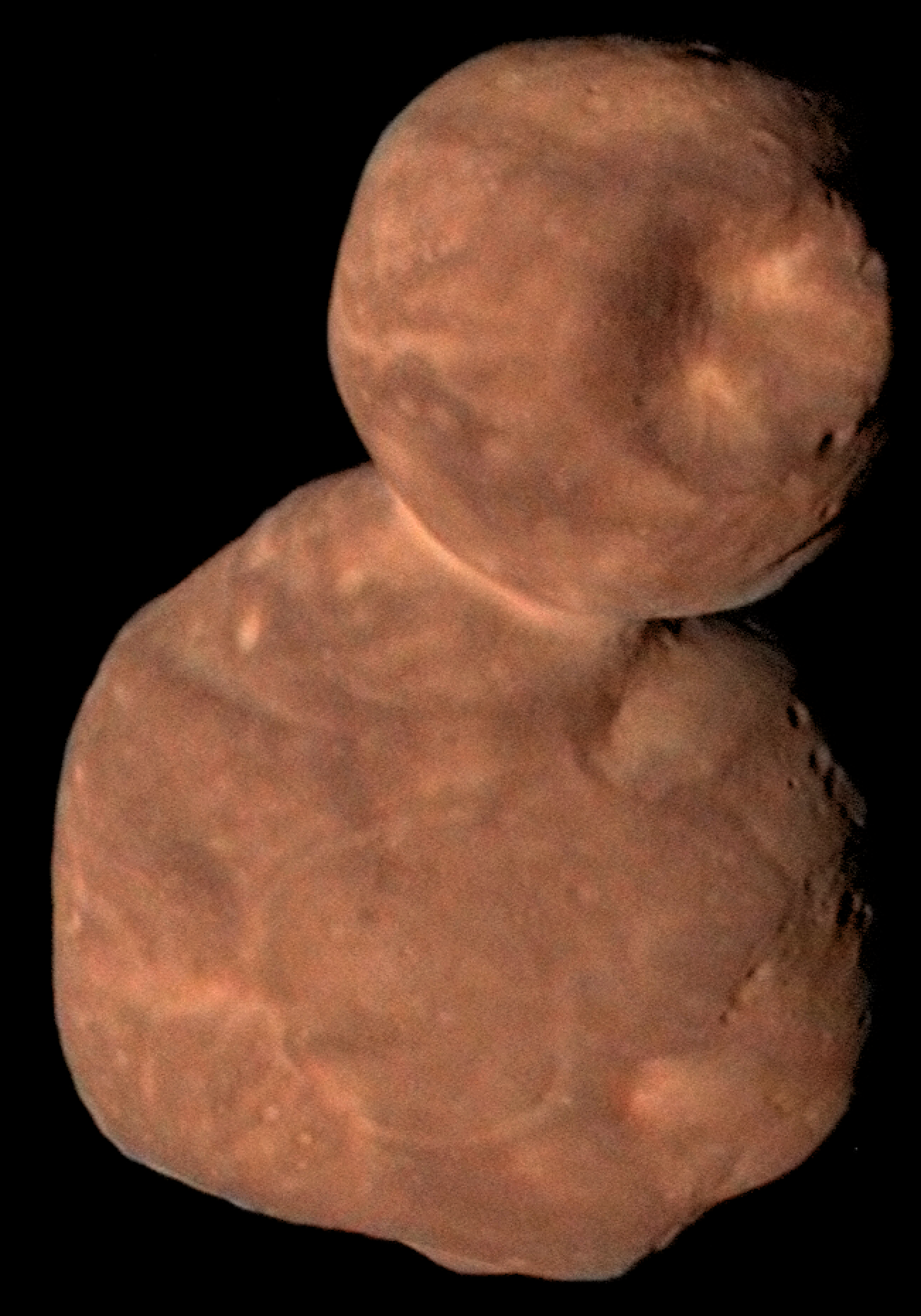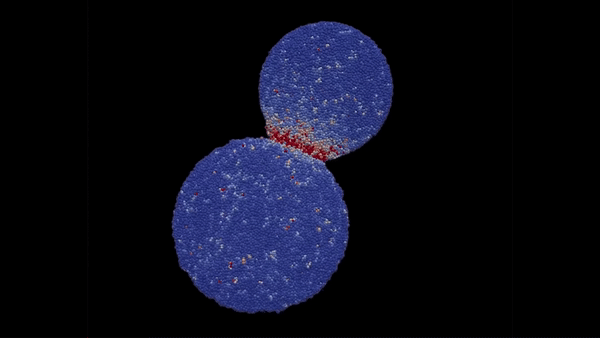
Over a year ago, the New Horizons spacecraft flew by a strange object at the edge of our solar system. Just a hazy form resembling a snowman on the day of the spacecraft’s closest approach, Arrokoth is now taking shape to be a fascinating and revelatory member of the region of the solar system beyond Neptune’s orbit known as the Kuiper Belt. Untouched by the usual turmoil and impacts of most small objects, this pristinely preserved world could tell us about the earliest years of our solar system’s formation.
New research published in a series of papers in Science begins to reveal Arrokoth’s mysteries, including its formation, geography, composition, various basic properties and more. Scientists from NASA’s Ames Research Center in California’s Silicon Valley worked alongside researchers from across the world to provide a comprehensive first look at this object.
Also known as MU69, the object consists of two lobes connected by a thin “neck” and has days that run almost 16 hours, while a full orbit around the solar system takes 298 years. Its orbit lies 44 times further away from the Sun than our own Earth, and based on the craters we see across its surface, Arrokoth is estimated to be about 4 billion years old.
“Arrokoth is a time capsule for our solar system’s origins,” said Orkan Umurhan, a research scientist at Ames and collaborator on the three Science papers. “MU69, and objects like it, can give us a look four billion years into the past and insight into where our cosmic home came from.”
A Cold, Red and Smooth Surface
The images from the New Horizon’s flyby reveal a complex world, rich not only in its geology, but in color and temperature as well.
The surface of Arrokoth is all red, but new analysis shows there’s more variation in the color than originally thought, with the smaller lobe slightly redder than the larger one. That red coloring is often an indicator of a type of chemical compound known as tholins – organics seen on many objects in the outer solar system, including Pluto and Saturn’s moon Titan. Though we don’t know if this is the case for certain on Arrokoth, Titan-like tholins would match the data we do have on the object.
Though we can’t measure the object’s temperature as we traditionally think of it, we can find a value for the temperature based on the object’s radiation by looking at its brightness. This “brightness temperature” varies around the object, with the poles of each lobe reaching temperatures below -350 degrees Fahrenheit, decreasing further about each lobe’s equator. The neck connecting the lobes is relatively warmer than the rest of the object by up to 6 degrees Fahrenheit.
Arrokoth is a world with complex geological features across its surface, and no rings or other smaller objects in its orbit. Though littered with light craters, each about half a mile or less across, the object’s surface is mostly smooth – with the exception of a larger crater nicknamed Maryland on the smaller lobe.
Maryland is most likely an impact crater, with its rim stretching more than four miles across and less than half a mile deep. Between the crater and the neck connecting the two lobes is a series of troughs, similar to those found on the asteroid Eros or Mars’ moon Phobos.
The larger lobe is even flatter than its counterpart. Besides a section marked off by a chain of pits, there are no large craters at all. That so much of Arrokoth’s surface is very lightly disturbed or not at all tells a story about its formation – one not filled with collisions and violence, but gentler and slower impacts.
The Origins of Arrokoth
Arrokoth’s two lobes appear to have once been separate objects, orbiting each other in synchronicity until merging together at a very slow speed – no more than a couple meters per second, perhaps even slower.
Those objects were likely formed in the very early years of our solar system, over four billion years ago. Then, the solar system was a nebulous swirl of gas and dust. Microscopic dust particles began to stick together into larger and larger chunks. Soon, those chunks become pebble-sized clouds that continue to collapse together, creating larger objects. In some cases, such as Arrokoth’s, those objects formed in pairs, leading to a binary system.
This could also explain certain aspects of Arrokoth’s chemical compositions, with possible methanol ices and complex organics that were also present in the early solar system nebula seen on the object as well. However, those organics could have emerged after Arrokoth had formed through chemical processes spurred on by cosmic radiation affecting methane on its surface. Unlike many similar objects, there is an absence of water ice, which appears to have been depleted or is obscured from our view.
Because Arrokoth’s formation was so benign, with no major collisions or aberrations apparent on its surface, the object can give us insight into this early phase of the solar system when planets and other objects were still forming. Its interior is likely preserved as well, leaving the same mixture of ices, organics and dust from the nebula of materials that created our solar system.
New Horizons has given us not only a new in-depth look into Arrokoth, but that of other Kuiper Belt objects and the larger solar system as well. This small and oddly shaped world contains aspects of our own history that can be uncovered almost nowhere else. It is a rare and pristine record of the early solar system, a time capsule of our origins that has many truths yet to unveil.
Credits: NASA/Johns Hopkins University Applied Physics Laboratory/Southwest Research Institute/James Tuttle Keane
For news media:
For more information about this subject, please contact the NASA Ames newsroom.
Author: Frank Tavares, NASA’s Ames Research Center




























